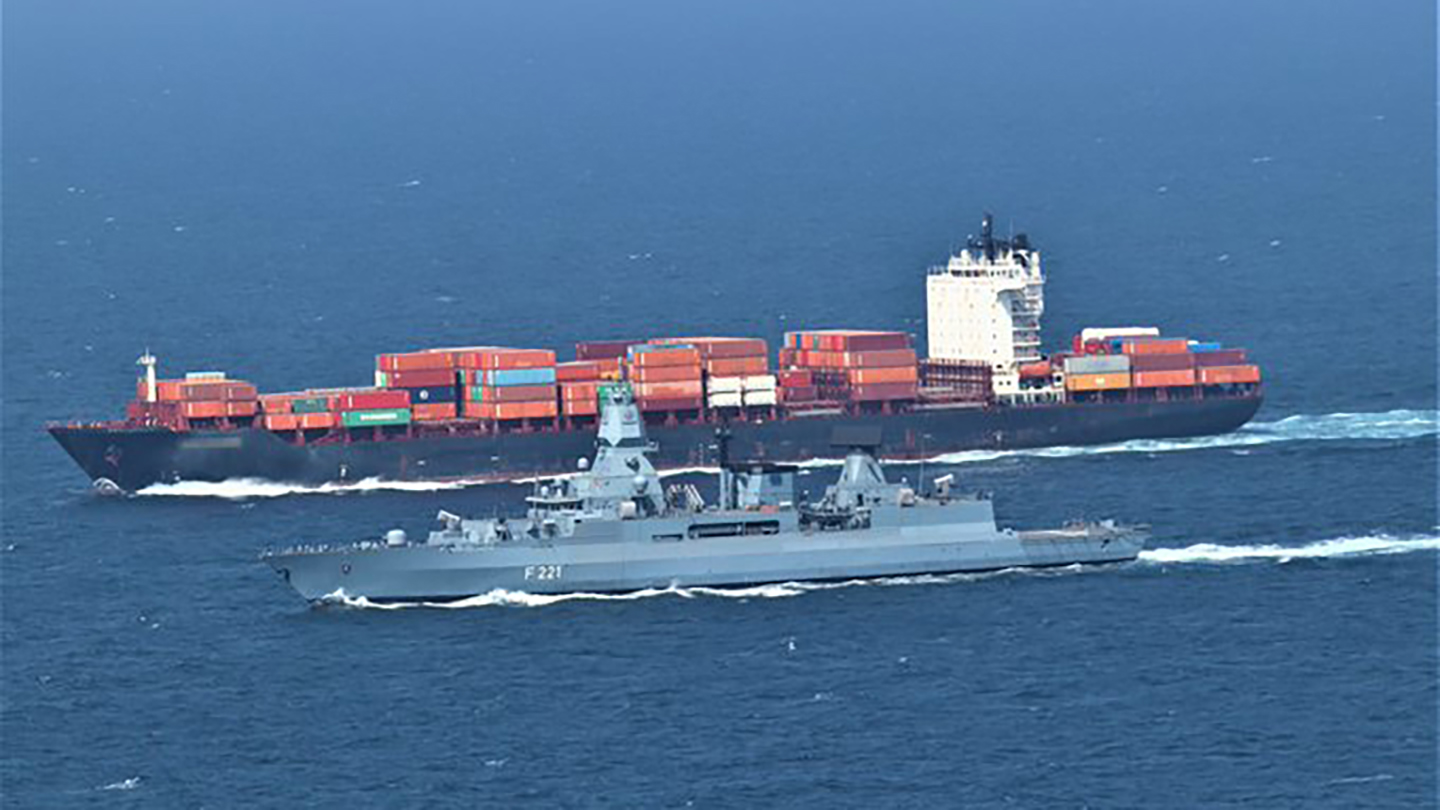After two months deployed to the Red Sea as part of the European Union’s mission to protect commercial shipping from Iranian-backed Houthi attacks, Germany’s Type 124 Sachsen class frigate FGS Hessen departed for home Saturday.
Since arriving on station in February as part of the European Union’s naval task force Operation Aspides, the Hessen “repelled four attacks by the Houthi rebels,” according to Germany’s Bundeswehr in a statement on Monday. The frigate, with a crew of 240, also carried out 18 close escort missions, guiding “27 merchant ships with a total tonnage of 1.3 million tons safely through the danger zone.”
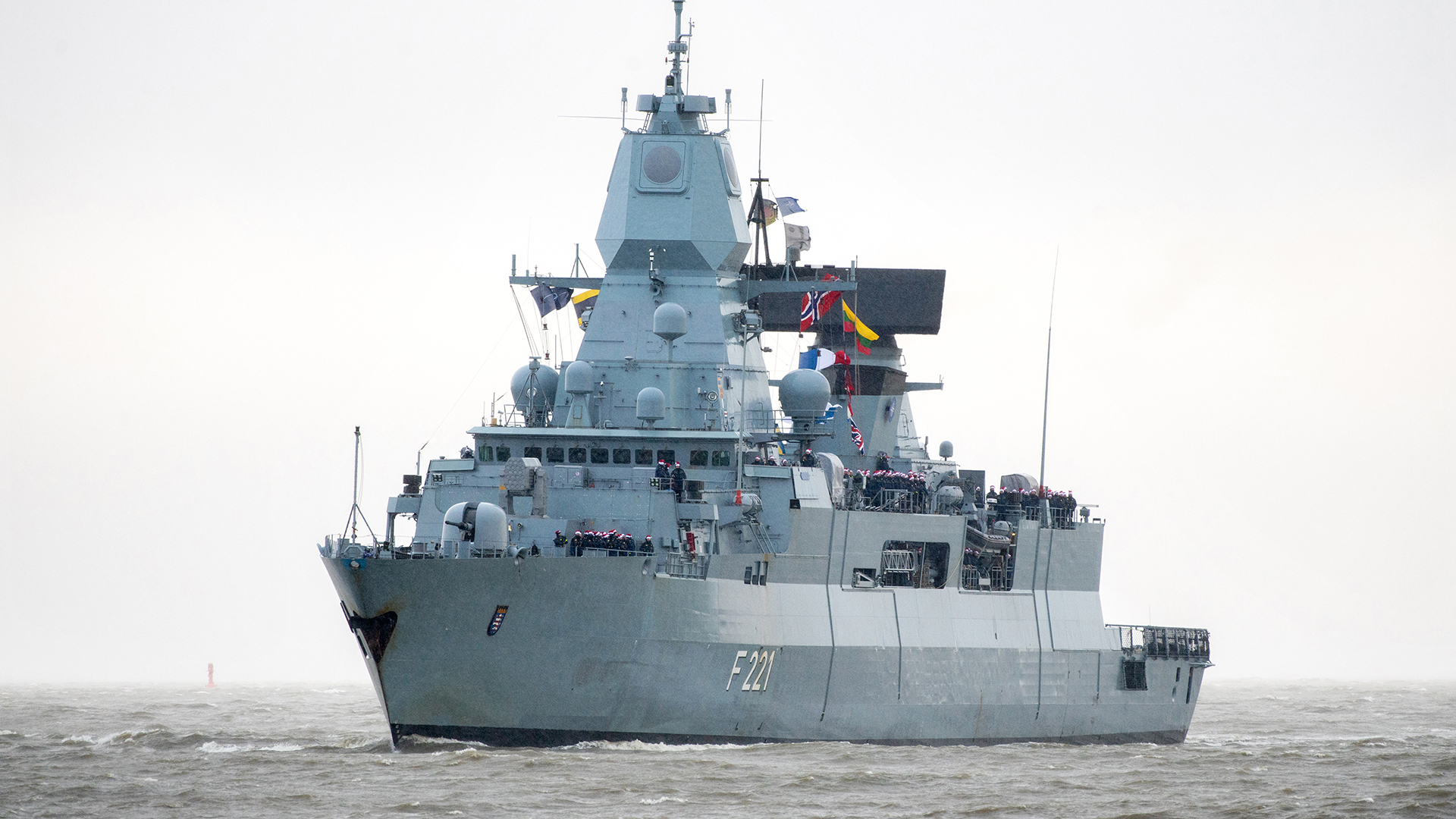
The Hessen’s crew was “on a permanent war march throughout the operational area,” according to Bundeswehr. “They were always on guard for six hours and then had six hours ‘off’ before going back on guard for six hours. This very high state of readiness was due to the constant three-dimensional threat to which the Hessen was exposed by the Houthi militias. In the worst-case scenario, the ship and crew would only have had about 10 seconds to bring their own defensive weapons into effect.”
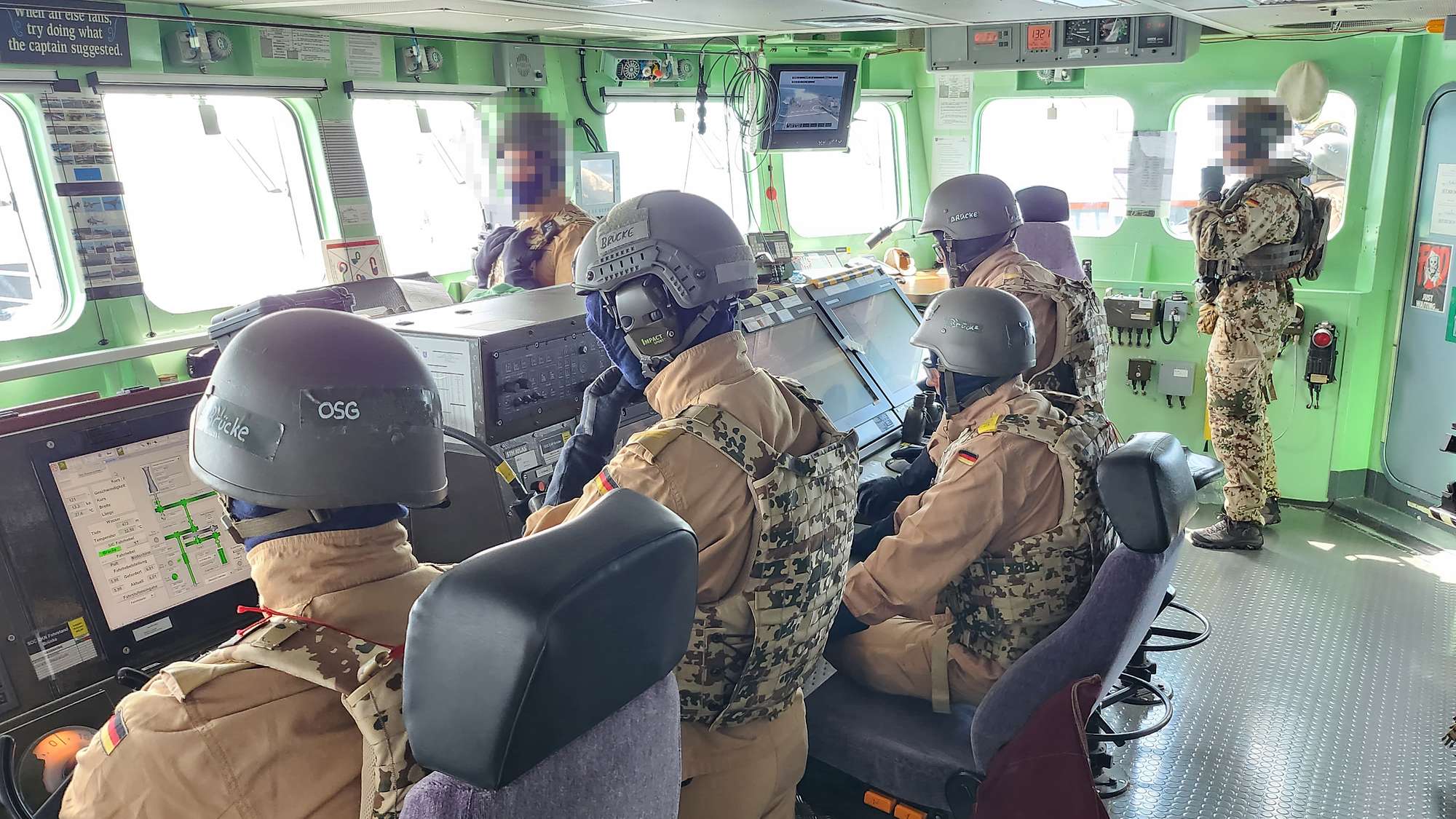
“This mission has demanded more from the ship and crew than ever before,” said Hessen’s Captain Volker Kübsch. “The Hessen worked like clockwork and impressively demonstrated its combat value – right down to its ability to prevail in battle.”
“Especially in combat situations, we were able to gain valuable, even unique experience not only for ourselves, but also for the entire German Navy and beyond,” he added. “I am proud of my crew and say with full conviction that the Hessen has added significant value to Operation Aspides.”
To replenish the ammunition used in the defense measures against the Houthi attacks, ammunition was resupplied in the port of Djibouti, according to Bundeswehr. The ammunition was flown in from Germany on a Luftwaffe Airbus A400M. In addition to their protective mission, the Hessen‘s crew was able to provide medical assistance in two cases.
Hessen, which departed Germany on Feb. 8 and is due back home in May, had its first engagement with Houthi weapons shortly after arriving in the region. The ship downed two Houthi drones at close range while operating in the Red Sea on Feb. 27, Germany’s Joint Forces Operations Command confirmed on Twitter at the time.
Hessen intercepted the first drone using its 76mm deck gun, German defense ministry spokesperson Michael Stempfle told reporters during a media conference at the time, Reuters reported. The second drone was shot down using a RIM-116 Rolling Airframe Missile. The two drones were supposedly “recognized by the radar system and had a different range… That’s why two different weapons were used.”
“This is… probably the most dangerous deployment of the German Navy for many, many years,” Stempfle added.
In addition to downing the Houthi drones, the ship accidentally fired on an American MQ-9 Reaper drone a day earlier while confused about its identity.
Stempfle told reporters at the time that the Hessen’s crew attempted to shoot down an unknown drone after efforts to clarify its nature with U.S. forces were unsuccessful. Two Standard Missile 2 (SM-2) interceptors were fired at the target, “but that didn’t work,” he stated. It was later learned that the Hessen targeted the Reaper, which did not have the transponder for the friend-foe identification (IFF, Identification Friend-Foe) switched on. The MQ-9 was supposedly on a mission not related to the shipping crisis around the Red Sea. American MQ-9s have flown out of the Horn of Africa and into Yemen on counter-terror and other missions over the years.
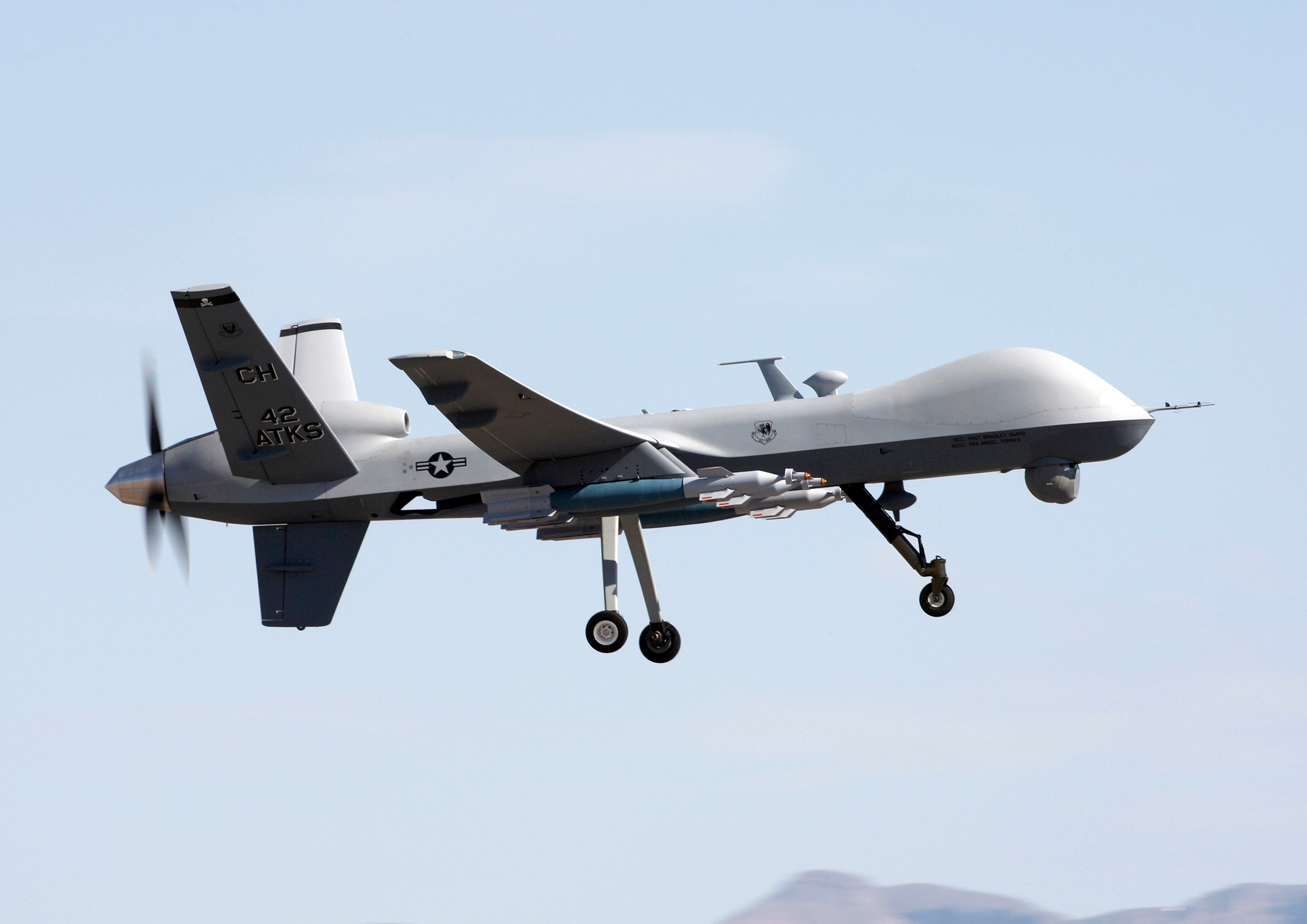
You can read more about these incidents in our original report here.
In addition to shooting down aerial drones, last month, a German Navy helicopter launched from the Hessen destroyed a Houthi uncrewed surface vessels (USVs) in the same region.
The Hessen is the second vessel attached to Operation Aspides to depart for home in recent weeks. Earlier this month, the French Navy announced Aquitaine class frigate Alsace returned to its home port after a 71-day mission that saw an unprecedented degree of threats against shipping from Houthi drone and missile attacks, according to its commander. The French Navy announced the return via a Tweet which you can see below.
Captain Jérôme Henry, commander of the frigate told the French newspaper Le Figaro at the time that the Houthis in the Red Sea displayed “uninhibited violence.”
The French Navy has not seen “an engagement with this level of armament” for a very long time, Henry added. “We weren’t necessarily expecting this level of threat. There was a surprisingly high level of uninhibited violence. The Houthis don’t hesitate to use drones that fly low over the water, to detonate them on merchant ships, and to fire ballistic missiles.”
Henry explained that Alsace had to respond to drone attacks on at least half a dozen occasions, as well as three attacks by ballistic missiles, as part of its mission to protect commercial vessels and the naval task force.

In addition to shooting down Houthi drones with its shipboard armaments, a French Navy helicopter launched from the Alsace used its machine guns to shoot down a Houthi drone last month. You can watch that engagement in the video below, released by the French Navy at the time.
Operation Aspides is the second international task force created specifically to deal with threats from the Houthis. In December, the U.S.-led Operation Prosperity Guardian (OPG) was launched, with the U.S., U.K., France, Denmark and Greece agreeing to provide warships. As we previously reported, France said it would not operate under U.S. command while Italy has a ship in the Red Sea not part of OPG, highlighting the challenging nature of these international efforts. Such concerns may have helped spur the creation of the European task force.
Launched in February, the plan for Operation Aspides was to have four frigates and one aerial asset patrolling the region to protect shipping, according to the EU’s Naval Forces. In addition to engagements by French and German warships, the Italian Navy Andrea Doria class destroyer Caio Duilio engaged a Houthi drone last month, shooting it down at a relatively close range of four miles.
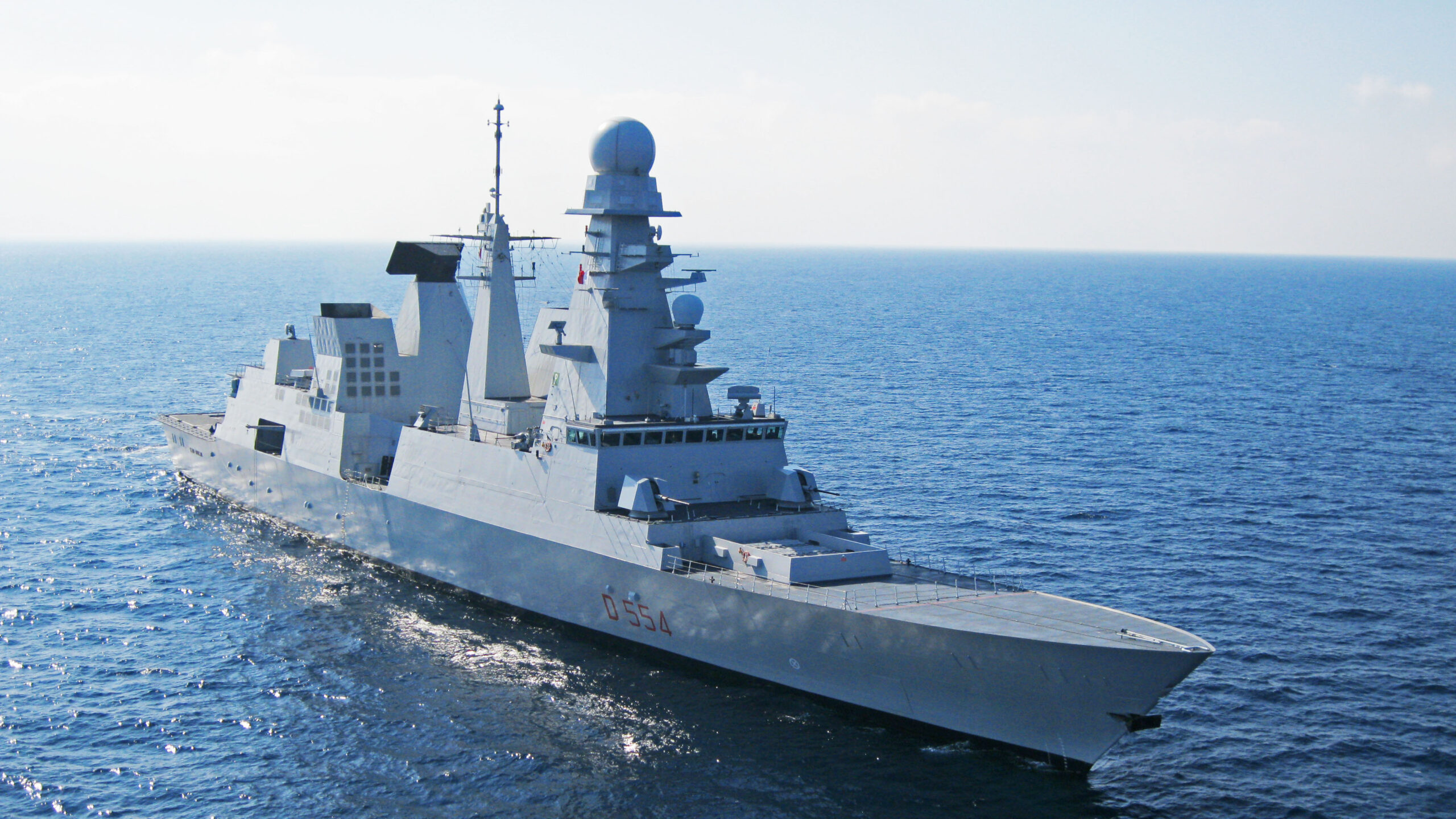
It is unclear at the moment what effect the departure of half the committed vessels will have on the operation. We reached out to the EU to find out and will update this story with any details provided.
The departure of the Hessen was hailed by the Houthis.
Yemen’s Deputy Foreign Minister Hussein al-Ezzi said the departure of the German frigate from the Red Sea as a “step in the right direction,” according to the Iranian Press TV news outlet. His statement follows a call made on Thursday by Houthi leader Abdul-Malik al-Houthi for European countries to withdraw their warships from the Red Sea, according to Press TV.
In the meantime, U.S., U.K., French and Danish warships and aerial assets continue to fight off Houthi aerial and surface drones, as well as ballistic missiles launched and prepared to launch from Yemen.
While the U.S. has carried out numerous planned and preemptive attacks against Houthi targets in Yemen, the group continues to attempt strikes on shipping. The most recent U.S. preemptive attack took place April 16, when U.S. Central Command said its forces “successfully engaged two unmanned aerial vehicles (UAV) in Iranian-backed Houthi terrorist-controlled areas in Yemen.”
There is no sign of a let-up in Houthi attacks on shipping, which the rebel group said it launched in wake of Israel’s war on Gaza.
“The Yemeni Armed Forces persist with their military operations, enforcing a blockade on Israeli navigation in the Red and Arabian Seas as well as the Indian Ocean, until a ceasefire is achieved and the siege on Gaza is lifted,” the Houthis said on their Telegram channel earlier this month.
After a tit-for-tat exchange between Israel and Iran earlier this month, direct conflict between those sworn enemies seems to have tapered off. However, the indirect combat, involving proxy forces like the Houthis, is likely to remain intense.
The departure from the Red Sea by the Hessen and Alsace comes amid concerns about European naval readiness.
While deployed to the region, the Danish frigate Iver Huitfeldt‘s crew downed drones as well, which the Danish Defense Ministry highlighted in this video below.
However, as we noted in our previous story, reports also emerged “that the Iver Huitfeldt‘s combat management system and associated radars experienced major issues during the ship’s recent deployment that temporarily prevented it from firing RIM-162 Evolved Sea Sparrow Missiles, or ESSMs. The ship did eventually employ ESSMs against Houthi threats, according to reports, which, if accurate, would be the first known instance of these missiles being used in the course of coalition operations against the Houthis.”
“In addition to the mission system issues, ammunition for the Iver Huitfeldt‘s two 76mm guns also reportedly repeatedly malfunctioned during the deployment, rendering it useless and potentially presenting a hazard to the ship and its crew.”
The Danish government fired the country’s chief of defense Flemming Lentfer over the problems earlier this month, according to Politico.
The Hessen is returning home after less than two months. That pales in comparison to many U.S. Navy deployments. The Nimitz class aircraft carrier Dwight David Eisenhower departed from the U.S. in October and is still in the region more than 190 days later. It transited the Suez Canal and entered the Red Sea in November and then the Gulf of Aden in mid-December.
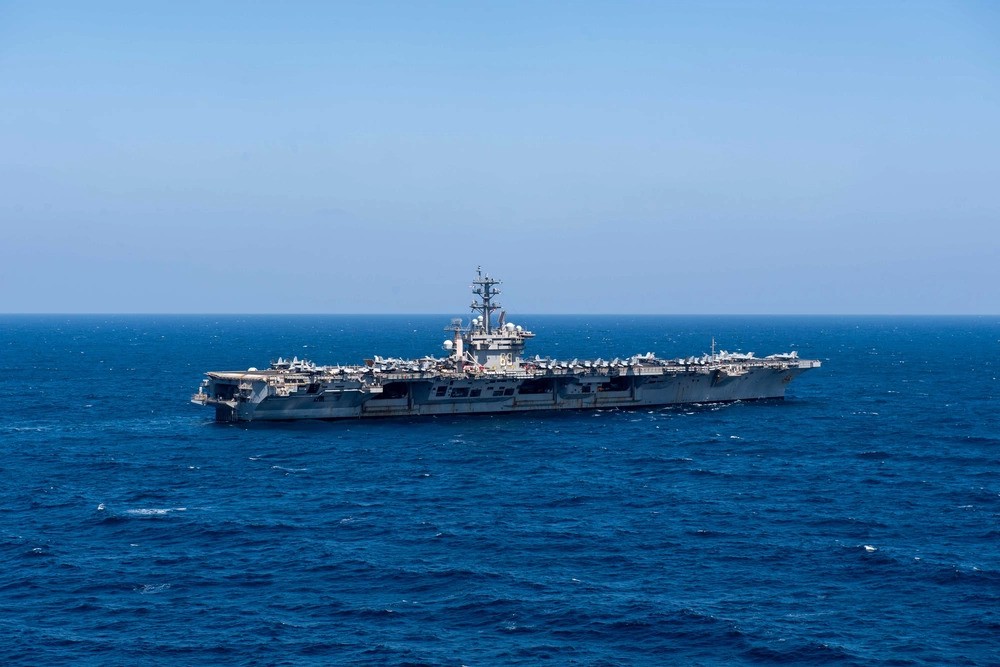
The German Navy says it will replace Hessen with the frigate Hamburg in early August. How much of a difference that gap in coverage creates remains to be seen.
Contact the author: howard@thewarzone.com
